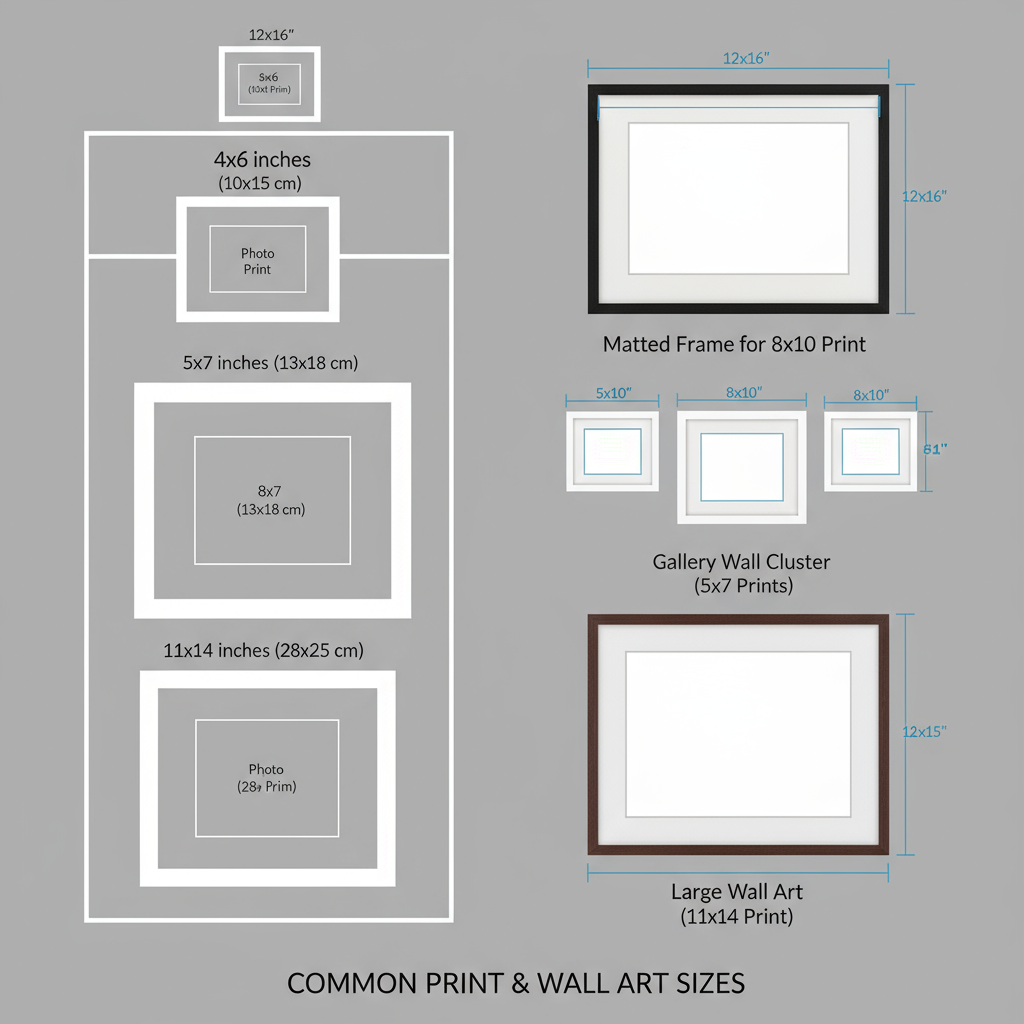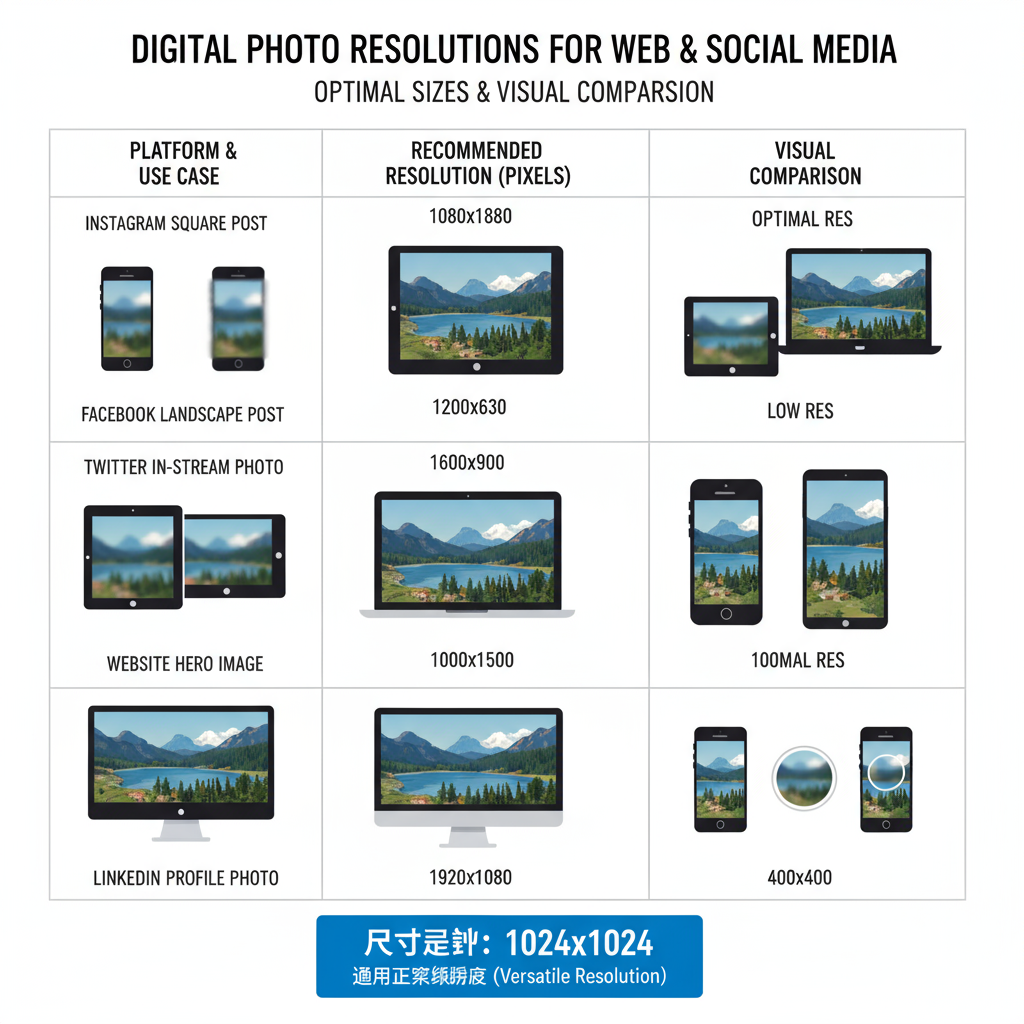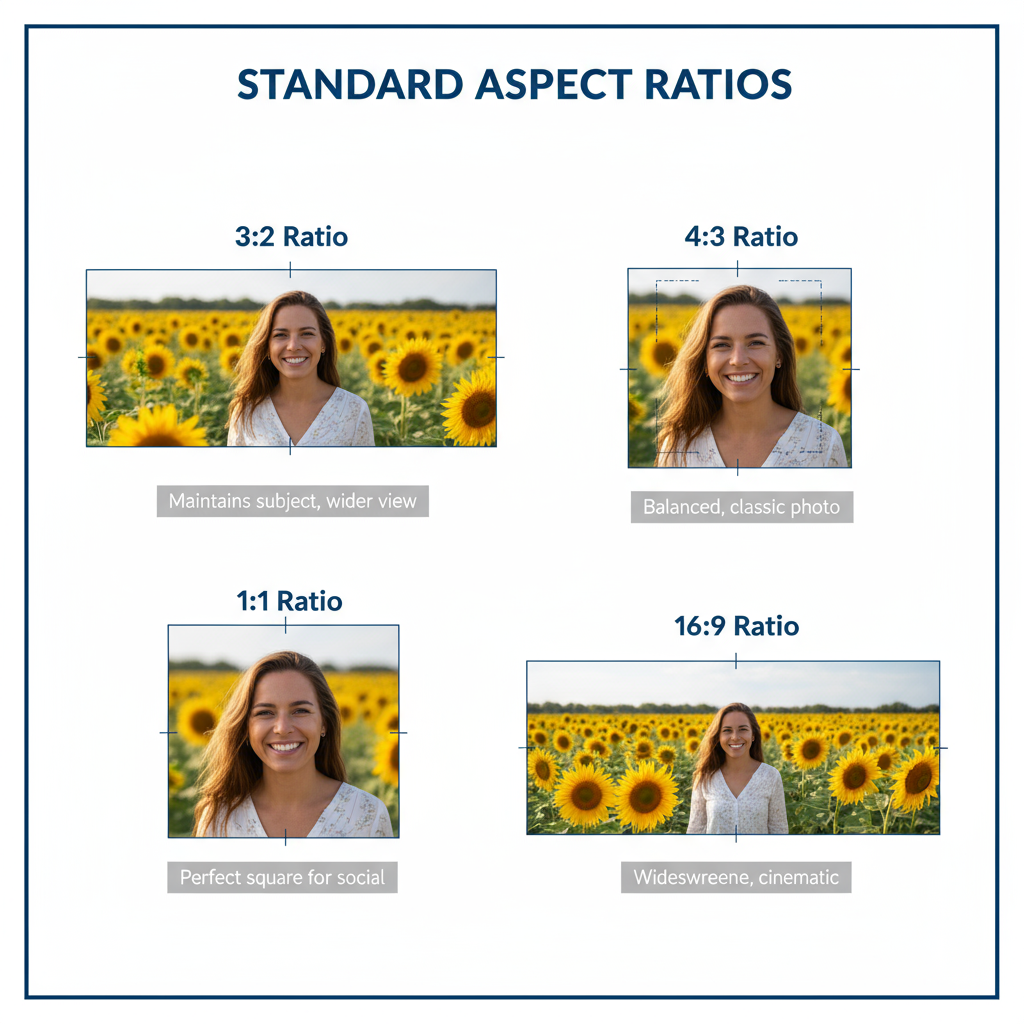Most Common Photo Sizes for Printing and Digital Use
Learn the most common photo sizes for printing and digital use, including aspect ratios, framing options, and optimal dimensions for web and social media.

Introduction to Photo Sizing and Why It Matters
Photo sizing is a crucial concept for ensuring your images look their best in both print and digital formats. The most common photo sizes you choose will directly affect image clarity, cropping, and overall composition. This applies whether you're printing family portraits, creating wall art, or preparing professional content for web and social media.
Physical printing sizes are usually measured in inches or centimeters, while digital images use pixels. Choosing the wrong dimensions can lead to cropped content, stretched proportions, or blurry results.

In this comprehensive guide, you’ll discover the most common photo sizes for print and digital use, understand aspect ratios, learn how to resize images without losing quality, and get practical sizing tips for different use cases.
---
Overview of Standard Aspect Ratios
The aspect ratio is the proportional relationship between an image’s width and height. This ratio stays consistent when you resize without cropping.
Common Aspect Ratios
- 3:2
- Derived from 35mm film; standard for DSLR cameras. Perfect for 4×6" prints.
- 4:3
- Common in point‑and‑shoot cameras and many smartphones.
- 1:1
- Square format, popular for Instagram and profile images.
- 16:9
- Widescreen, ideal for video frames and desktop backgrounds.
Aspect Ratios and Their Uses
| Aspect Ratio | Common Uses | Example Sizes (inches) |
|---|---|---|
| 3:2 | Prints, artistic photography | 4×6, 8×12 |
| 4:3 | Compact cameras, smartphones | 6×8, 9×12 |
| 1:1 | Social media, square prints | 5×5, 8×8 |
| 16:9 | Video, slides, presentations | 4×7.1, 8×14.2 |
---
Most Common Photo Sizes for Printing
Printing sizes are standardized and often offered in both imperial and metric measurements. Below are the most common photo sizes with their approximate centimeter equivalents.
| Inches | Centimeters | Aspect Ratio |
|---|---|---|
| 4×6 | 10×15 cm | 3:2 |
| 5×7 | 13×18 cm | Approx. 7:5 |
| 8×10 | 20×25 cm | 4:5 |
| 8×12 | 20×30 cm | 3:2 |
| 11×14 | 28×36 cm | Approx. 11:7 |
| 16×20 | 40×50 cm | 4:5 |
---
Popular Photo Sizes for Framing and Wall Art
When planning home décor, the frame size will dictate how your photo is perceived. Oversized frames can overwhelm while too-small images may lack impact.
Popular framing sizes:
- 11×14" – Ideal for portraits.
- 16×20" – Great for standout pieces.
- 20×30" – Suited for gallery-style art prints.
- 24×36" – Poster-sized focal points.
Tip: Consider matting (a decorative border) for an elevated look that can draw attention to the photo while increasing the total display size.

---
Common Digital Photo Resolutions for Web and Social Media
Digital platforms have their own optimal image sizes. Following these can help preserve quality while avoiding unnecessary compression.
Facebook:
- Profile Picture: 400×400 px (minimum)
- Cover Photo: 820×312 px
Instagram:
- Feed Square: 1080×1080 px
- Portrait: 1080×1350 px
- Story: 1080×1920 px
Twitter (X):
- Header: 1500×500 px
- Post Image: 1200×675 px
Websites & Blogs:
- Hero Banner: ~1920×1080 px
- Inline Images: 800–1200 px width
---
How to Choose the Right Photo Size for Printing vs. Digital Sharing
Your choice should be guided by the intended display medium:
- Printing:
- Work with high DPI (dots per inch)—typically 300 DPI for clear prints.
- Example: A 4×6" print at 300 DPI needs 1200×1800 pixels.
- Digital:
- Size images according to platform recommendations to avoid compression artifacts. Extremely large files may slow down page loads.
Pro tip: Always keep the unedited, high-resolution original so you can create different sized versions for various uses.
---
Tips for Resizing Images Without Losing Quality
- Start from the highest-quality master file available.
- Keep the aspect ratio locked to avoid distortion.
- Use professional tools like Adobe Photoshop, GIMP, or Lightroom.
- Avoid unnecessary upscaling—it can reduce quality.
- For online use, export as optimized JPEG, PNG, or WebP.
## Example using ImageMagick to resize and maintain quality
magick input.jpg -resize 1200x800 -quality 90 output.jpg---
Differences Between Portrait and Landscape Formats
Orientation impacts composition and where the viewer’s focus lands.
- Portrait: Taller than wide (e.g., 8×10"). Best for vertical subjects, formal portraits, and full-body shots.
- Landscape: Wider than tall (e.g., 10×8"). Perfect for nature landscapes, group pictures, and panoramic images.
Experiment with both to discover what works best for your image content.

---
Converting Between Inches, Pixels, and Aspect Ratios
To translate between units:
Pixels = Inches × DPI
Example: For a 5×7" print at 300 DPI:
Width = 5 × 300 = 1500 px
Height = 7 × 300 = 2100 pxAspect Ratio Calculation:
Width ÷ Height → simplified ratio.
Example: 3000×2000 px yields 1.5 → 3:2 ratio.
---
Conclusion with Quick Reference Chart of Common Photo Sizes
Here is a quick reference cheat-sheet combining print and digital dimensions:
| Use Case | Size (inches) | Size (cm) | Pixels @ 300 DPI |
|---|---|---|---|
| Standard Print | 4×6 | 10×15 | 1200×1800 |
| Framed Artwork | 11×14 | 28×36 | 3300×4200 |
| Poster | 24×36 | 61×91 | 7200×10800 |
| Instagram Square | N/A | N/A | 1080×1080 |
| Instagram Story | N/A | N/A | 1080×1920 |
| Website Hero | N/A | N/A | 1920×1080 |
---
Summary:
Knowing the most common photo sizes for print and digital will help you achieve sharp, perfectly composed images for any platform. Always start with the highest possible resolution, keep your aspect ratio intact, and tailor each image to its intended medium.
Call to Action:
If you found this guide helpful, bookmark it for your next project and share it with friends or colleagues who want consistently professional-looking photos.




